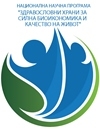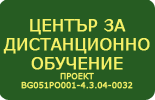Risk Management
|
Course title: |
Risk Management |
|
|
Course code: |
IFRMA |
|
|
ECTS: |
3 |
|
|
In-class hours |
Lectures: |
15 |
|
Laboratory work/Tutorials: |
15 |
|
|
Self-preparation hours |
Practical training: |
30 |
|
Other: |
15 |
|
|
Total hours: |
75 |
|
|
Language: |
English |
|
|
Study cycle: |
BSc |
|
|
Semester: |
Winter, summer |
|
|
Faculty: |
Faculty of Economics |
|
|
Name of the lecturer(s): |
Chief Assist. Prof. Haik Garabedian, PhD |
|
|
Mode of delivery: |
Face-to-face, distance learning |
|
|
Prerequisites: |
English Proficiency |
|
|
Learning outcomes of the course unit: |
“Risk Management” is a Bachelor’s degree course. The goal of the class is to analyze, assess, and control events/situations. The objective is to minimize risk and the associated losses. Particular attention will be dedicated to the following types of risks that directly affect a business or company: • Financial risk • Legal risk • Reputational risk The focus is on developing risk management capacity at all levels. Students will become familiar with a risk assessment matrix, which will help them identify the most serious risks and determine which require immediate action. Course objectives: To gain both theoretical knowledge in risk analysis and management, as well as practical skills for monitoring and control. During the course, students will become familiar with an in-depth understanding of the importance of risk management. This will provide the following advantages: 1. Greater organizational stability. 2. Better decision-making. 3. Reduction of potential losses. Upon completing the course, the student will have the following general skills: • To conduct a comprehensive risk analysis. • To develop strategies and models for control. • To make strategic and tactical management decisions, designed for enhancing competitive advantages. |
|
|
Course contents: |
LECTURES: 15 hours
1 Structure of Risk. Main Characteristics – 2 2 Basic Functions of Risk - 2 3 Services for the Regional Economy and Society Derived from the Landscape - 2 4 Benefits and Secondary Effects of Risk Analysis and Control - 2 5 Approaches and Methods for Risk Valuation - 2 6 Contribution of Risk Control to Development and Increasing Competitiveness - 2 7 Mechanisms for Risk Management - 2 8 Financial Instruments for Risk Management - 1
PRACTICAL EXERCISES: 15 hours 1 Methods for Risk Analysis and Assessment - 3 2 Measuring the Direct and Secondary Effects of Risks on a Given Enterprise - 3 3 Risk Management Strategy - 3 4 Structuring Risks within a Specific Business Model. Case Study - 3 5 Guidelines for Developing a Course Project - 3
|
|
|
Recommended or required reading: |
1. Bozhinov, B. (2017). Risk Management. Sofia: “Stopanstvo” Publishing. – A classic university textbook covering the fundamentals of identifying, assessing, and managing risk in economic systems. 2. Ilieva, M., & Hristova, S. (2020). Risk Management in Business. Varna: University of Economics – Varna. – A practice-oriented study featuring examples from Bulgarian companies. 3. Stoyanov, K. (2019). Financial Risk and Risk Management in Financial Institutions. Sofia: UNWE. – Focused on financial and banking risk. 4. Kuneva, V. (2021). Economic Risk Management in the Agricultural Sector. Plovdiv: Agricultural University of Plovdiv. 5. Hillson, D. (2017). Practical Project Risk Management: The ATOM Methodology. Management Concepts Press. 6. Hopkin, P. (2018). Fundamentals of Risk Management (5th ed.). Kogan Page. International Organization for Standardization. (2018). ISO 31000:2018 Risk Management – Guidelines. Geneva, Switzerland: ISO.
|
|
|
Planned learning activities and teaching methods: |
FORMS OF OUT-OF-CLASS WORK: 45 hours • Course Project – 30 hours As part of the out-of-class work, each student independently develops a thematic project. The goal is to apply the knowledge and skills acquired during the lecture course and practical exercises to a real case study. The completed projects are presented and discussed collectively during a seminar session. The project topics are determined based on the students' interests. • Consultations for Course Project Development – 15 hours |
|
|
Assessment methods and criteria: |
The training is conducted through lectures, practical exercises, and supervised out-of-class work. During the lectures, the topics from the curriculum are presented, and to facilitate understanding, specific practical examples related to the discussed issues are provided. The audience’s attention is maintained through the use of discussion questions. The lecture material provides the necessary theoretical foundation for the practical exercises, where students solve specific managerial cases and problems. As part of the out-of-class work, each student develops a course project, independently selecting the subject of their research. |
|
 - Events on the occasion of the 80th anniversary of AU
- Events on the occasion of the 80th anniversary of AU











